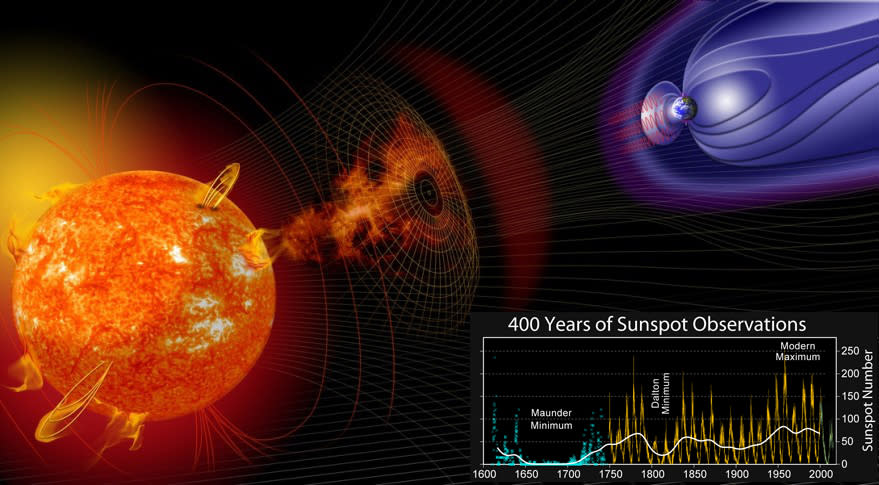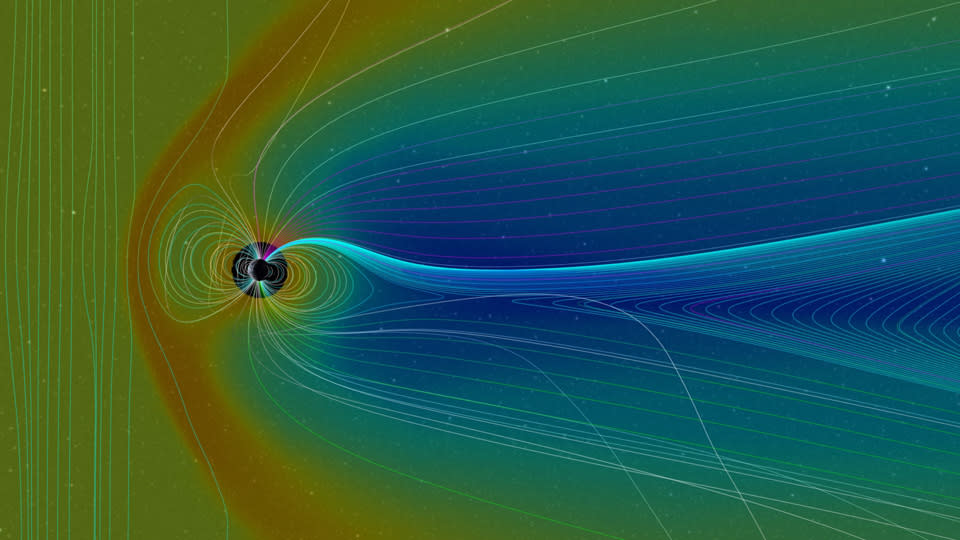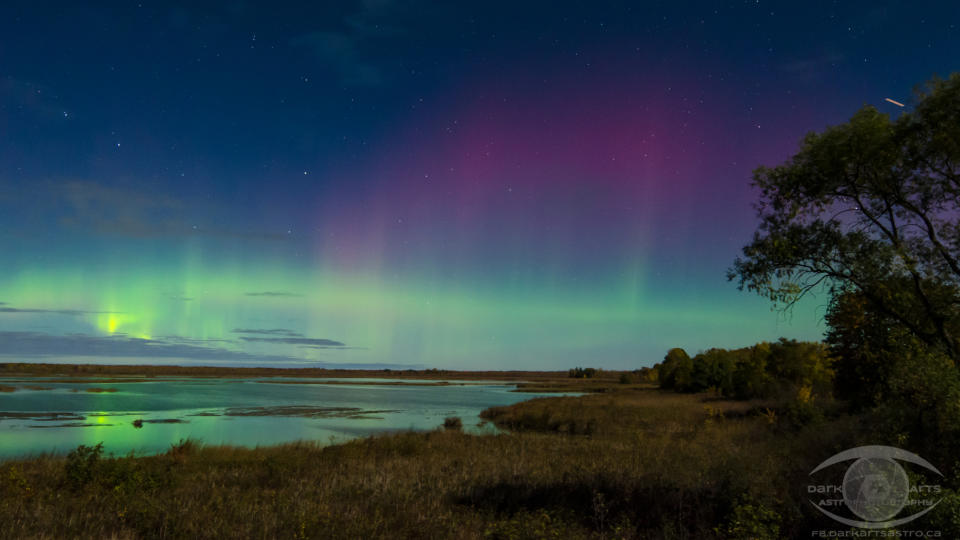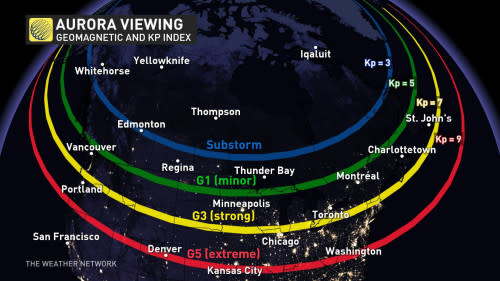The Northern Lights may shine across Canada overnight tonight
Eyes to the sky overnight for a chance to see the elusive Northern Lights!
On Saturday, September 16, a massive filament of solar matter peeled away from the Sun and launched into space. Known as a coronal mass ejection (CME) or solar storm, this cloud of charged particles has been expanding outwards through the inner solar system throughout the weekend.

These three panels taken by the NASA/ESA Solar and Heliospheric Observatory's coronagraph instrument on Saturday, September 16, 2023 show the CME expanding away from the Sun. The Sun is represented by the small white ring inside the black circle, and the growing cloud around it is the CME. Due to it forming a 'ring' around the Sun, space weather scientists call this a 'halo' CME. Credit: NASA/ESA
NOAA's Space Weather Prediction Center is expecting this 'halo CME' to sweep past Earth on Monday night or very early Tuesday morning (Eastern Time). As a result, their forecasters have issued a G2-geomagnetic storm watch for overnight tonight. According to spaceweather.com, NASA is predicting a later arrival for the solar storm, indicating that there is some uncertainty in the timing.
IN PHOTOS: Stunning auroras on display across Canada during solar storm
If the CME follows NOAA's prediction, auroras are expected to push as far south as central Quebec, the northern Great Lakes, and the central Prairies around midnight EDT, with the potential for activity to increase in the few hours before dawn. Based on this timing, Aurora watchers across the Prairies will likely be in for the best show tonight.
If, instead, the solar storm arrives when NASA expects, we could miss the show entirely. Aurora activity typically occurs on the night side of the planet, or that is at least where it can be seen (the sky is too bright during the day for us to pick out the subtle colours of the aurora). Thus, if the storm arrives late enough, the only people who will see the auroras over the next day will be those living in northern Siberia.
What is a geomagnetic storm?

The phenomena of space weather. Credit: NASA
The Sun is a very active star. It emits a constant stream of charged particles called the solar wind. Also, it goes through a cycle of increasing and decreasing activity every 11 years, blasting out solar flares and throwing immense clouds of solar plasma into space (CMEs) during its more active periods.
Shielding us against much of this activity is Earth's geomagnetic field, which is generated by the planet's molten core. This field surrounds Earth and diverts most of the impacts of the solar wind and CMEs around us.
__READ MORE: How to get the most out of meteor showers and other night sky events (like auroras!)

This graphic shows a simulated view of Earth's geomagnetic field. The Sun is far off the left side of the image, and the field is compacted on the sunward side and extends away from the planet in the opposite direction due to the pressure of the solar wind. The colours shown here highlight the strength of the field. In reality, Earth's geomagnetic field is invisible to our eyes. Credit: NASA
However, when a high-speed stream of the solar wind washes over us or a dense, energetic CME sweeps past, it causes a disturbance in the geomagnetic field. Scientists call these disturbances geomagnetic storms, and they classify them based on strength, from "minor" (G1) to "extreme" (G5).
During these storms, charged particles from the solar wind or CME become trapped in the geomagnetic field and stream into the upper atmosphere. There, they smack into atoms and molecules of oxygen and nitrogen in the air. In the process, they pass on some of the energy they carry with them from the Sun. The atoms and molecules then release this energy as coloured flashes of light. Combined, these flashes form the displays of the Northern and Southern Lights we see in the sky.

This beautiful image of the Northern Lights was captured from Camden Lake, ON, on October 13, 2016. Credit: Joe Gilker/UGC
Auroras stay relatively close to the north and south poles during 'normal' space weather conditions. When geomagnetic activity increases, though, the auroras get pushed farther out.
Here in North America, during a minor (G1) geomagnetic storm, displays of the Northern Lights will extend down across Labrador, central Quebec, just north of the Great Lakes, and across the Prairies. Each incremental rise in storm strength moves the aurora "oval" farther south, as shown in the diagram below.

Auroras from a moderate (G2) geomagnetic storm, as NOAA SWPC forecasts for Monday night and Tuesday morning, will typically reach between the green and yellow lines. Under these conditions, southwestern Ontario and Nova Scotia are the only parts of the country excluded from the possibility of seeing the auroras. However, the timing is also crucial. The later the show begins, the farther west it will be visible, leaving the eastern parts of the country behind.
(Thumbnail courtesy Joe Gilker, who uploaded this image of the Aurora Borealis from Camden Lake, on October 13, 2016, into the Weather Network's UGC Gallery)


